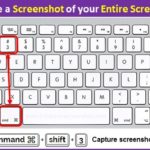What is cryptocurrency?
 Cryptocurrency is a type of virtual digital currency based on cryptography that does not have any internal or external administration. The concept of cryptocurrency is now often found in many media, but not everyone clearly understands what it is. To make it clear what cryptocurrency is, let’s try to explain in simple words why it was created, how it differs from ordinary money and how to use it.
Cryptocurrency is a type of virtual digital currency based on cryptography that does not have any internal or external administration. The concept of cryptocurrency is now often found in many media, but not everyone clearly understands what it is. To make it clear what cryptocurrency is, let’s try to explain in simple words why it was created, how it differs from ordinary money and how to use it.
In simple terms, cryptocurrency is a new type of payment system that allows you to pay for goods and services. The main difference between cryptocurrencies is that they are not regulated by any administrator and their purchasing power is evaluated only by supply and demand. Their main feature is that they do not have a physical embodiment, they are created and stored on virtual wallets. This virtual currency is based on cryptography, in other words, on the principle of mathematical encryption that is not tied to other currencies. The highly sophisticated algorithm encryption system guarantees its absolute protection against fakes.
Now almost all areas of life use new technologies. This did not bypass the financial sphere. The use of national currencies is limited to the borders of one state and only the American dollar is used as an international currency. The wide circulation of the dollar and its dependence on it bothered many states and frequent businessmen, and many began to think about creating an independent international currency. But the problem of creating such a currency is that its value must be supported by certain material values, including gold reserves, and it is practically impossible to do this for all countries.
With the advent of electronic payment methods, online money systems have appeared, such as: Webmoney Yandex. Money “, Qiwi and others. But for all these systems, the equivalent is real currency, the same dollars, rubles, etc. Moreover, these systems belong to certain structures and are naturally controlled by them.
So that the currency would not be dependent on specific organizations, the idea of creating a new electronic currency arose. Such a decision to create a decentralized payment system was the invention of a kind of digital cryptocurrency, the issue, accounting and exchange of which are based on cryptography, i.e. encryption. The main difference between cryptocurrency and electronic money of existing payment systems is precisely in the fact that it does not have a physical embodiment. In addition, cryptocurrency is not controlled by any single server belonging to any particular state, bank or concern.
How did you get it?
The development of a new currency began back in 1998, but only in 2009 a new electronic payment system Bitcoin appeared on the Internet, the currency of which was called Bitcoin. The creator of the new system was a certain Satoshi Nakamoto. This is probably a pseudonym and it is possible that more than one person is hiding under this name in a whole group. Who these people are still unknown, however, the Bitcoin system is constantly being developed and now.
To begin with, only 50 coins were issued, but the server began to be used and the coins quickly dispersed. Guarantees that Bitcoin is not controlled by the official authorities of any country in the world have increased interest in the new currency. Bitcoin encryption technology is so complex that it is impossible to fake it, like the same gold. To protect against emissions, the release of cryptocurrencies is limited. In total, 21 million bitcoins are available, of which about 65% are currently in circulation. To more thoroughly understand what cryptocurrency is, you need to delve into the process of its creation.
How is it created?
Any cryptocurrency on the Internet is mined and put into circulation by a user, the so-called miner, and the cryptocurrency mining process is called mining. To do this, a very powerful computer with special software is used that allows you to perform very capacious coding operations in the form of a solution of embedded algorithms. For Bitcoin, this is the generation of new blocks, for which the miner receives a reward in the form of cryptocurrencies. The reward can not be used immediately, but only after receiving 120 confirmations, this usually takes about 20 hours.


























